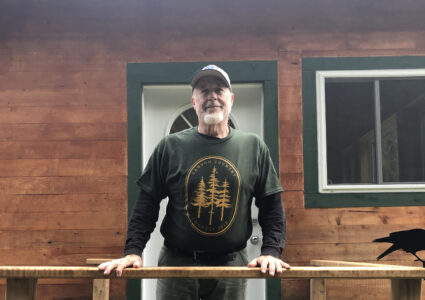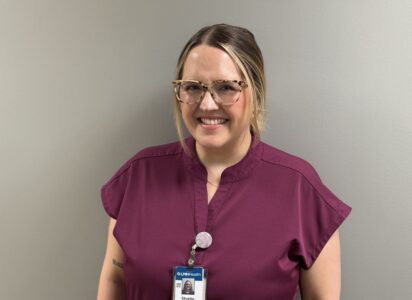Spine surgery helped carpenter stand tall again

photo by: Contributed Photo
Craig Willis
Being a carpenter can take a toll on your body — just ask Craig Willis. As an interior finish carpenter, he’s an artisan focusing on the details of completing a home — installing trim, crown molding, doors and cabinets — after the framing, insulation, plumbing and wiring is complete.
“I’ve been working as a finish carpenter since 1980, and I’ve had some issues with my body,” Willis said. “I’ve had a shoulder, hip and knee replaced because of the degradation of working all the time.”
Eventually, Willis’ back joined in and began giving him problems. Willis had tried physical therapy, worked with pain management physicians and received epidural steroid injections in his back, but they provided limited relief. That was problematic, especially as he continued to work. He needed to be on his feet.
“I’d be standing up doing stuff and then I’d have to sit down on the two-foot step stool that I carried with me. I’d work for about five minutes and then have to sit for a minute. That just became overwhelming and only allowed me to work for about four hours a day,” Willis said.
It was evident that therapy, exercise and the injections weren’t cutting it, and Willis was referred to Dr. Hemil Maniar, an orthopedic spine and trauma surgeon at Lawrence Spine Care.
Maniar approaches the first appointment with a patient by getting a complete history, asking questions about their symptoms — onset, duration, progression and response to conservative treatments — and performing a detailed physical examination. After that, he walks the patient through what their images show in a manner they understand.
“Craig came to us in April 2024 with low back pain, sciatica and claudication — pain that goes down the legs when you stand and walk. After looking at his MRI, I told him that his symptoms were far less severe than what the images would suggest,” Maniar said.
Willis chuckles at that memory.
“We’d never met before and Maniar had told me that he thought I’d be coming in a wheelchair because of my X-rays and MRI scans,” he laughed.
Those images showed issues in a number of areas. To fully understand the problem, you have to first understand how your back works.
Picture your spine as a stack of building blocks with soft cushions in between. The blocks are the bones, and the cushions are the discs that act like shock absorbers.
Running through the middle is a tunnel that protects the spinal cord, which is like an electrical cable carrying signals from your brain to the rest of your body.
Along the way, small nerves exit through openings — like exits off a highway — to go to your arms, legs, and organs.
Muscles and ligaments act like support cables to keep everything stable while still letting you bend, twist, and move.
“Craig had significant disc degeneration at L3-L4, L4-L5 and L5-S1,” Maniar said. “He had bone spurs and herniated discs, meaning that the material inside the disc was coming out and pushing against nerves and causing him pain. All of this encompasses a common diagnosis — spinal stenosis, which is a narrowing of the spinal canal that can put pressure on the nerves.”
Surgery fits the bill
Since Willis had tried conservative treatment options — physical therapy, medications and spinal injections — and those had limited success, Maniar was confident that spine surgery would be helpful. He recommended a multi-level spinal fusion and decompression surgery to relieve pressure on the nerves. But what does that mean?
“With disc degeneration and the narrowing of the spinal canal — meaning the holes that the nerves come out of are smaller in size — we have to increase the size of those holes. The way to do that is to put titanium spacers between the bones and jack that space open,” Maniar said. “We remove one of the joints during this process, so we need to stabilize the spine and fuse it during the surgery.”
He discussed the surgery with Willis, explaining it would be extensive and going through the risks and benefits. Willis was ready, and surgery was scheduled for May 30, 2024. Everything went according to plan, and he spent a couple of nights as an inpatient at LMH Health.
“I’ve always had great experiences with surgeons and surgery at LMH, and this was no exception. Everything was fabulous,” Willis said. “I was up and walking that first day and I was so happy.”
From day one after surgery, Willis has done well and is back to work full time. At his one-year visit, he was released from treatment and doesn’t foresee any hiccups in his future. He knows that any surgery can be scary, especially spine surgery, but he trusts Maniar and the team at Lawrence Spine Care.
“I was looking at spending the rest of my life being someone who couldn’t stand or walk like I wanted to, and now I have almost total relief,” Willis said. “Dr. Maniar explained everything to me in a way that was easy to understand, explained my options and took great care of me. I recommend him to anyone who asks.”
— Autumn Bishop is the marketing manager and content strategist at LMH Health, which is a sponsor of the Lawrence Journal-World health section.





